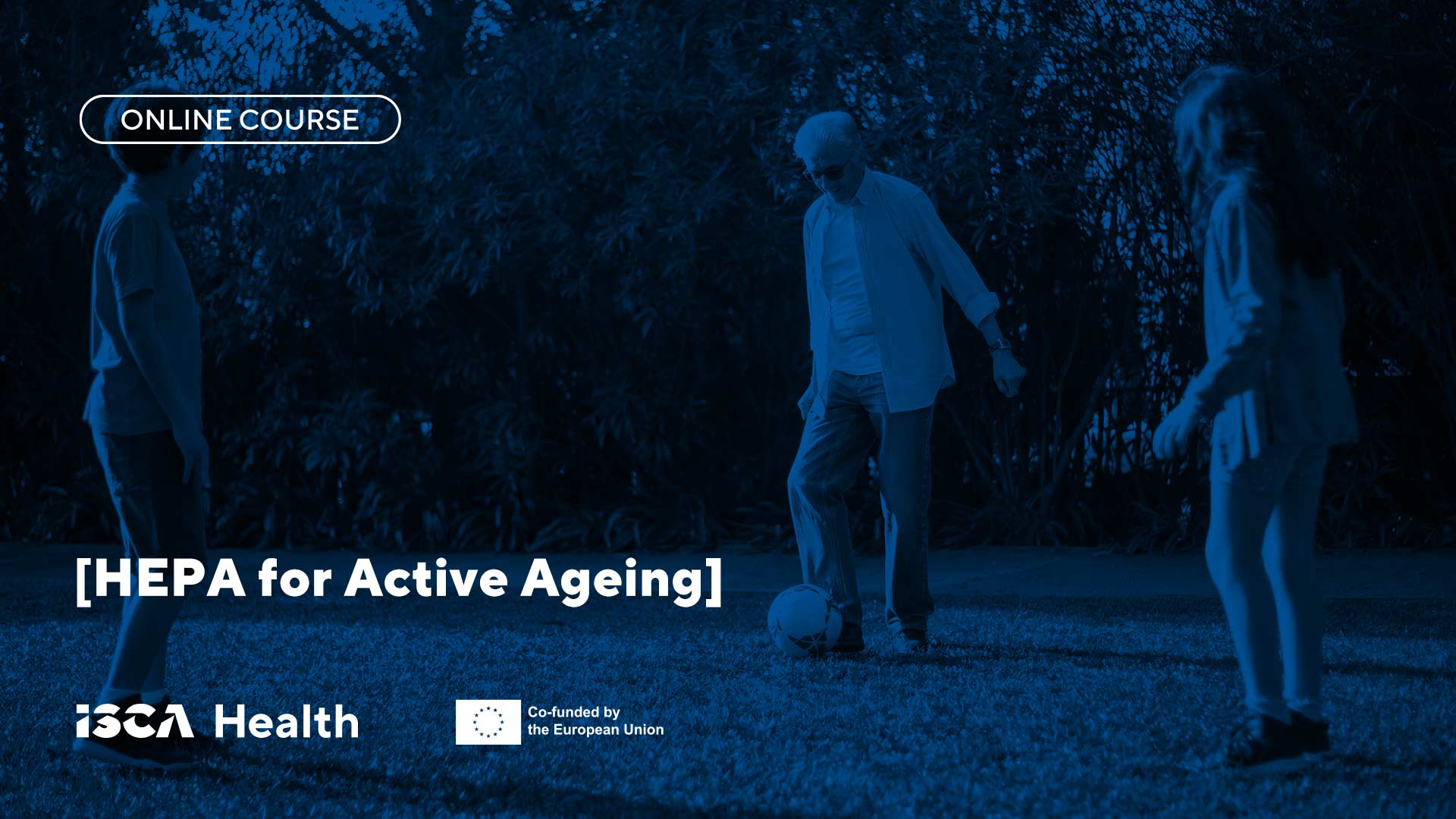Module 4: Can active, healthy, and fit ageing become a reality?

Europeans can now expect to live for far longer than ever before. Population projections suggest that the ageing of the EU’s population will accelerate in the coming decades, with a rapid expansion in the number and share of older people (Source: Ageing Europe, A Eurostat publication). Actually, it is projected that there will be close to half a million centenarians in the EU-27 by 2050.
Yet, these extra days and years of life are not always spent in good health. The natural ageing process means that sooner or later everyone will evolve into a human with a lower degree of physical functioning. In a society where older people tend to live on their own with many people developing conditions that reduce their independence, this is likely to cause some serious challenges to individuals and to society – the health system in particular. But regular physical activity and exercise for the elderly can help improve mental and physical health, both of which will help maintain people’s independence as they age. It’s been proven that even among frail and very old adults, mobility and function can be improved through physical activity.
That’s the reason why promoting active ageing has become such a priority for many institutions.
Ageing is something we all experience every day, no matter in which phase of our life we are. But it does not mean we are powerless. Indeed, ageing well and fit is not about chasing the forever young. It’s more about giving a positive orientation to the late stages of life. Allowing people to live their life with the mental and physical health to enjoy it. Active ageing emphasises health in an integral way.
At this stage one question remains. Could humans be just like wine bottles – ageing well with proper care? And if so, what could be the role of sport and physical activity in providing assistance and prevention so that ageing well and fit becomes a reality for the majority?
Module 4 of 
🔹 Understand the 4 dimensions of active ageing and the importance of falls prevention among elderly
🔹 Develop and/or adapt your practice to allow people to be active safely and in comfort as they get older
🔹 Work in and with the community to facilitate an active lifestyle for older people
Glossary of key terms
What is Active Ageing?
WHO (2002) defines active ageing as “the process of optimising opportunities for health, participation, and security in order to enhance the quality of life as people age”. This framework applies to individuals and larger population groups and has the aim to optimise wellbeing on three levels: physical, social, and mental (both affective and cognitive).
Active ageing involves:
| ✔️ Experiencing high quality of life and active participation. |
| ✔️ Gathering new information and knowledge. |
| ✔️ Investing time in meaningful activities. |
| ✔️ Living independently at home. |
| ✔️ Building and maintaining social relationships. |
| ✔️ Performing adequate physical activity. |
What is Healthy Ageing?
The WHO continued to add insights to this framework and in 2020 defined healthy ageing as “the process of developing and maintaining the functional ability that enables wellbeing in older age”. The concept is broader than being free of disease and emphasises the importance of functional ability and environments. Functional ability is determined by the intrinsic capacity of the individual (that is, the combination of all the individual’s physical and mental capacities), the environments he or she inhabits (understood in the broadest sense and including physical, social and policy environments), and the interaction between these.
What is Fall Prevention?
Falls are the second leading cause of unintentional injury-related deaths worldwide. And the risk of falling increases with age. The good news is that many falls are avoidable. This is where fall prevention comes in. Fall prevention includes any action taken to help reduce the number of accidental falls suffered by susceptible individuals, such as the elderly and people with neurological or orthopedic indications.
Who are the elderly?
The elderly are the large group of over-60s. This group is admittedly very heterogeneous and a further classification is desirable.
About the contributors
| Name | Profession | Organisation | Country |
| Dr Ine De Clerck🔗 | Head of Research | Artevelde University of Applied Sciences | 🇧🇪 |
| Dimitri Vrancken🔗 | Researcher Active Healthy Ageing | Artevelde University of Applied Sciences | 🇧🇪 |
| Prof Niamh Murphy🔗 | Senior lecturer and Leader of the Centre for Health Behaviour Research | South East Technological University | 🇮🇪 |
| Patricia De Vriendt🔗 | Senior researcher in Gerontology | Vrije Universiteit Brussel | 🇧🇪 |
| Zdenka Katkič🔗 | President | School of Health Association | 🇸🇮 |
Let’s get to the core of the content.
